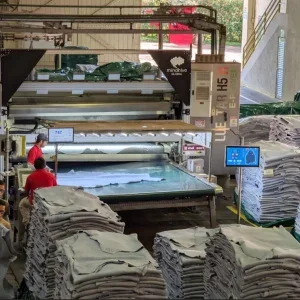All materials on sale will be certified LVMH Maisons’ deadstock and will be sold at around 70% of the original wholesale price.
The idea began from inventory managers working at Givenchy and Kenzo and was brought to LVMH’s DARE program which is a platform within the company that allows workers to propose ideas that promote a more circular fashion economy.
Unused fabric costs the industry $120 billion per year, according to online deadstock marketplace Queen of Raw, who note wasted fabrics either end up burned or buried.
However, the new market place is careful not to sell any LVMH exclusive patterns or branded fabrics so as not to devalue its brands. LVMH is a hugely profitable business and is doing well even despite the drop in footfall at its stores. LVMH was in hot water previously about its disposal of excess clothes to ensure they were not reused or sold on. The firm was not the only one to do this. Upmarket British fashion label Burberry burned its unsold clothes, accessories and perfume worth £28.6m in 2018 to protect its brand. LVMH rival Richemont, which owns jewelry and watch brands Cartier, Piaget, and Baume & Mercier, admitted in May 2018 that in an effort to keep its products out of the hands of unauthorized sellers, it had destroyed about $563 million worth of watches.






